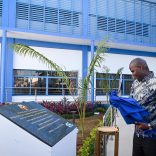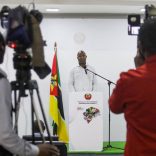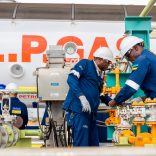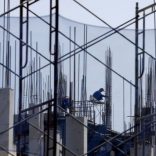Mozambique: Chapo calls on employers to channel deductions from workers’ wages to INSS
Mozambique: US company promises to invest in Macuse – AIM

Image: Thai Moçambique Logística SA: TML / @ tml.co.mz
The US company Ethos Asset Management Inc on Friday announced that it will invest 400 million dollars in the construction of a deep water port at Macuse, in the central Mozambican province of Zambezia.
This is described as a financing partnership with the Mozambican company Thai Mozambique Logistica (TML) which holds the concessions on the proposed port at Macuse, and on a new railway to be built from Chitima. In Tete province, across the Moatize coal basin, to Macuse, a distance of 639 kilometres.
Building the port and the railway will cost 2.7 billion dollars (about 1.9 billion for the railway) and 800 million for the port). Rolling stock and port equipment is estimated at a further 500 million dollars.
The Ethos Asset Management release said its investment “will ensure the construction of a multi‐purpose port designed to handle export and import of dry bulk, agricultural products, general cargo and liquid bulk”.
The port, it claims, “will handle a multi-product cargo such as wood chips, fertilizer, grain, and fuels, and be capable of accommodating vessels of 65,000 DWT capacity”. But it expects this cargo to reach Macuse by road. The rail corridor to Macuse will be “a later development”.
At no stage did the release, or the statement by Ethos Asset chairperson Carlos Santos, mention the word coal. Yet the whole raison d’etre for a new port in Zambezia was to move vast quantities of coal, from the Moatize coal basin, to export markets. In those days Mozambican coal exports of over 100 million tonnes a year were envisaged.
On the basis of the coal boom, the Brazilian mining giant Vale built a new port at Nacala-a-Velha in the northern province of Nampula, and a railway from Moatize to Nacala across southern Malawi.
But now Vale is pulling out of Mozambique and selling its Mozambican assets. Internationally, the tide has turned against fossil fuels, and particularly against coal, seen as the most environmentally damaging fuel of all.
There is still a market for coking coal, used as a reducing agent in the steel industry. But it is not possible to mine for coking coal, without also moving large amounts of less valuable thermal coal.
The future thus looks bleak for a port and rail project originally designed to transport coal.












Leave a Reply
Be the First to Comment!
You must be logged in to post a comment.
You must be logged in to post a comment.